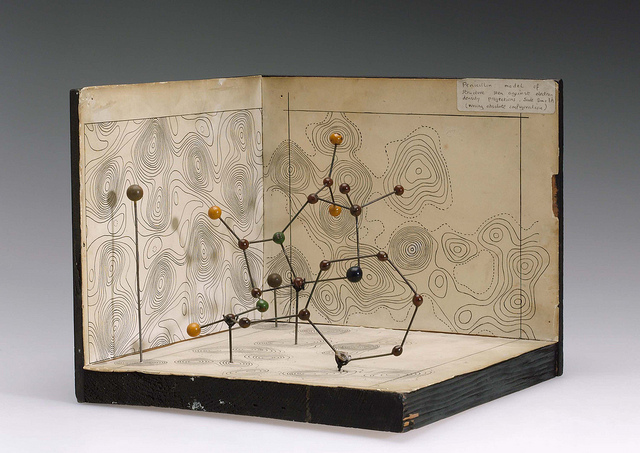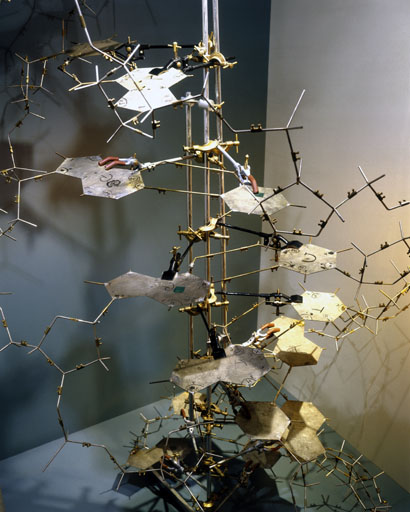By Roger Highfield, Director of External Affairs
Google today celebrates the life of the Nobel-prize-winning chemist Dorothy Crowfoot Hodgkin (1910-1994) with a Doodle on its homepage.
Here you can see the inspiration for the Doodle on what would have been her 104th birthday, her historic image of the three dimensional atomic structure of penicillin, which she deduced with a method called X ray crystallography.
Because it was not possible to focus X rays scattered by the penicillin, Hodgkin used large punch-card operated tabulators, predecessor to the computer, to help analyse the way the molecule diffracted X-rays. You can see the original in the Hidden Structures display case in the Science Museum.

Hodgkin, who at Oxford University taught the future prime Minister Margaret Thatcher (then Margaret Roberts) in the 1940s, won the Nobel Prize for Chemistry in 1964 “for her determinations by X-ray techniques of the structures of important biochemical substances”.
Another notable molecular structure Hodgkin tackled was that of vitamin B12, which she cracked with the help of Alan Turing’s Pilot Ace computer, which can also be seen in the Museum.

She was one of the first people in April 1953 to travel from Oxford to Cambridge to see the model of the double helix structure of DNA, constructed by Briton Francis Crick and American James Watson, based on data acquired by Rosalind Franklin, which can also be seen in the Museum’s Making the Modern World gallery.

The pioneering protein crystallographer, the third woman to win the Nobel Prize in Chemistry, was awarded the Order of Merit, only the second woman to do so, after Florence Nightingale, and was the first to be awarded the Royal Society’s Copley medal, its oldest and most prestigious award.
She died in July 1994, aged 84. In her honour, the Royal Society has established the prestigious Dorothy Hodgkin fellowship for early career stage researchers.
The origins of the technique she used date back to when X-rays, one of the most remarkable discoveries of the late 19th century, had been shown to react strangely when exposed to crystals, producing patterns of spots on a photographic plate.
In 1912 physicists William Bragg (1862-1942) and his son Lawrence Bragg (1890-1971) worked out a formula that linked the X-ray diffraction pattern with a crystal’s atomic structure, paving the way for X-ray crystallography as a technique to determine the structure of materials at the atomic level. For this, Bragg and his son won the Nobel Prize in Physics in 1915.